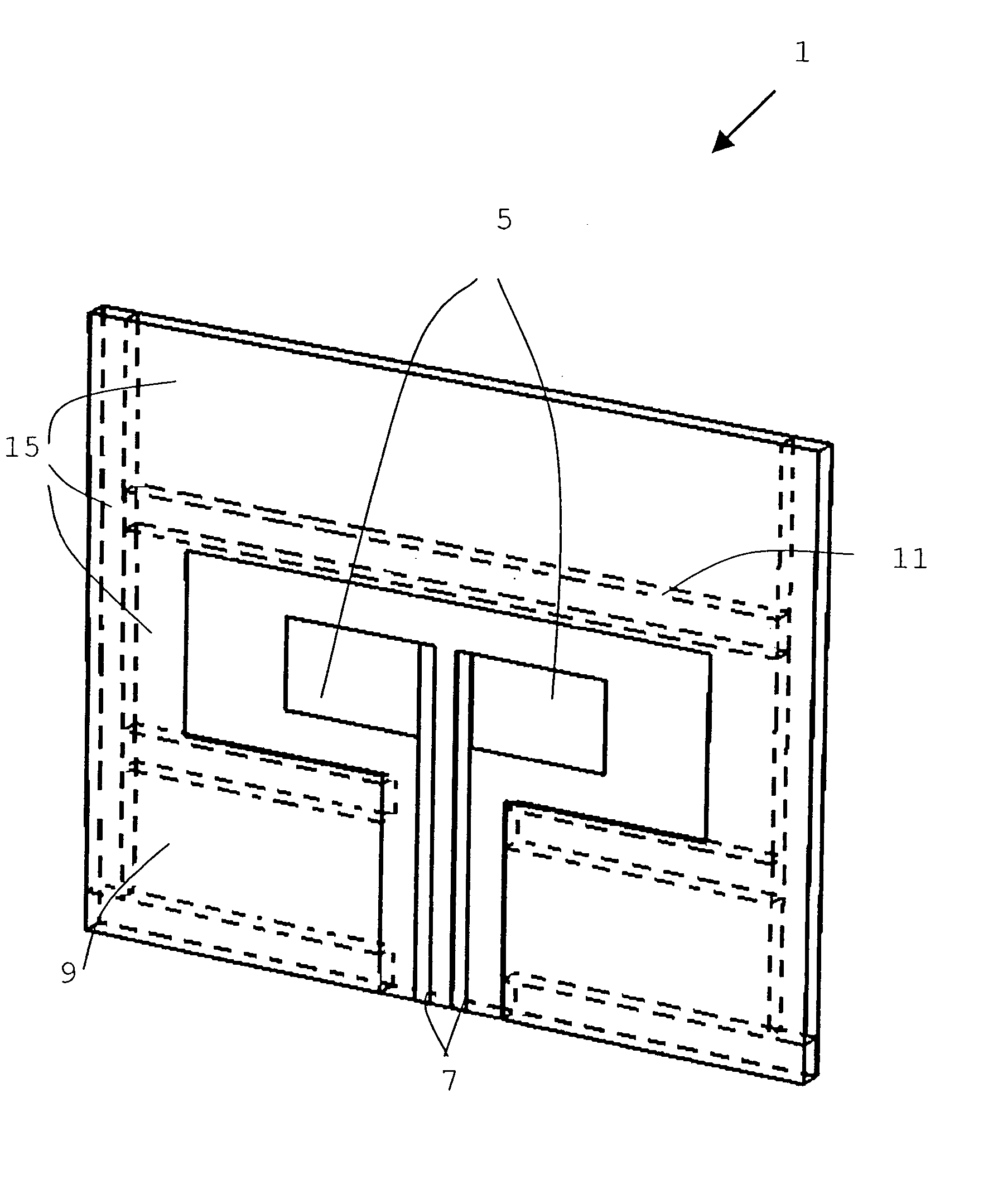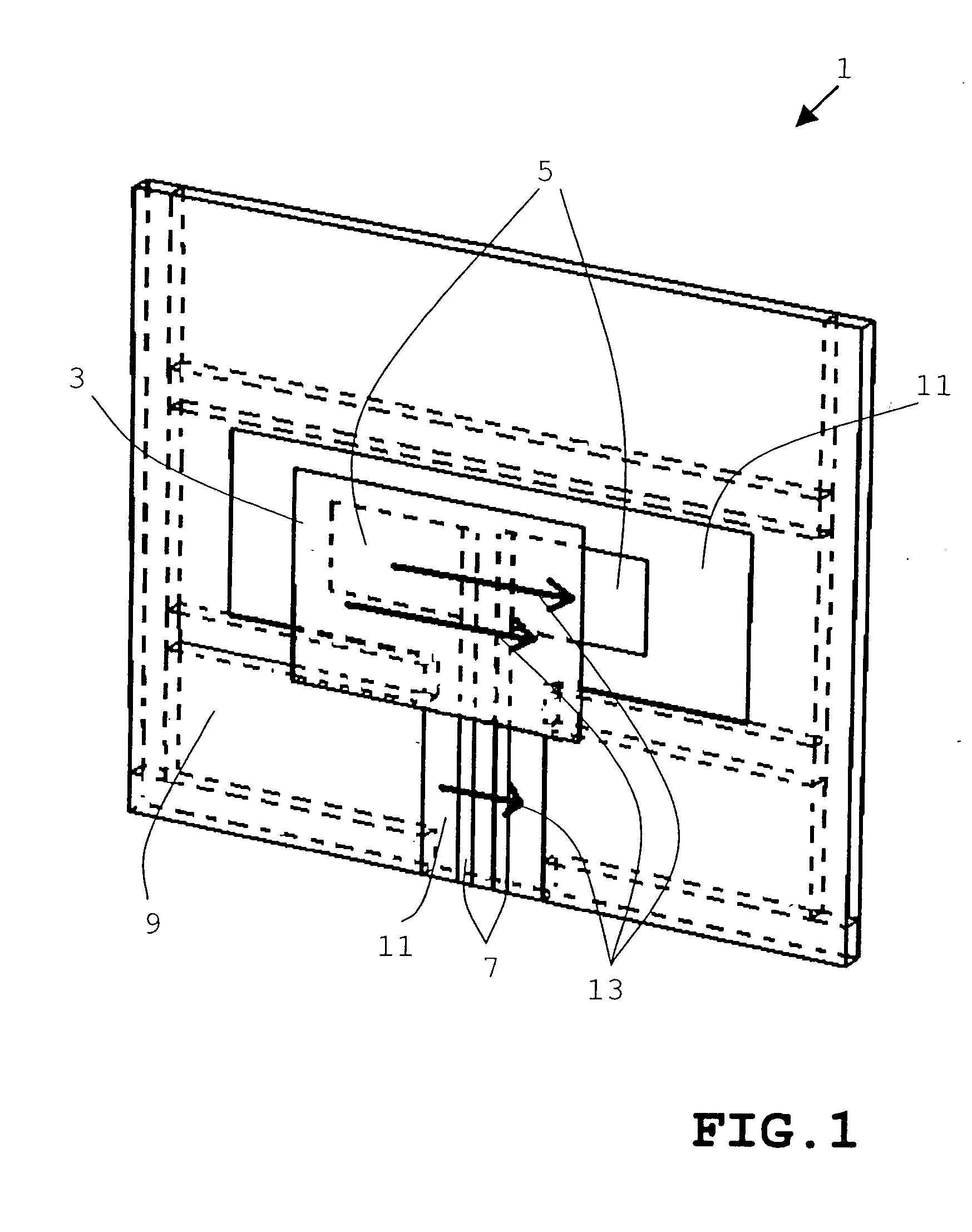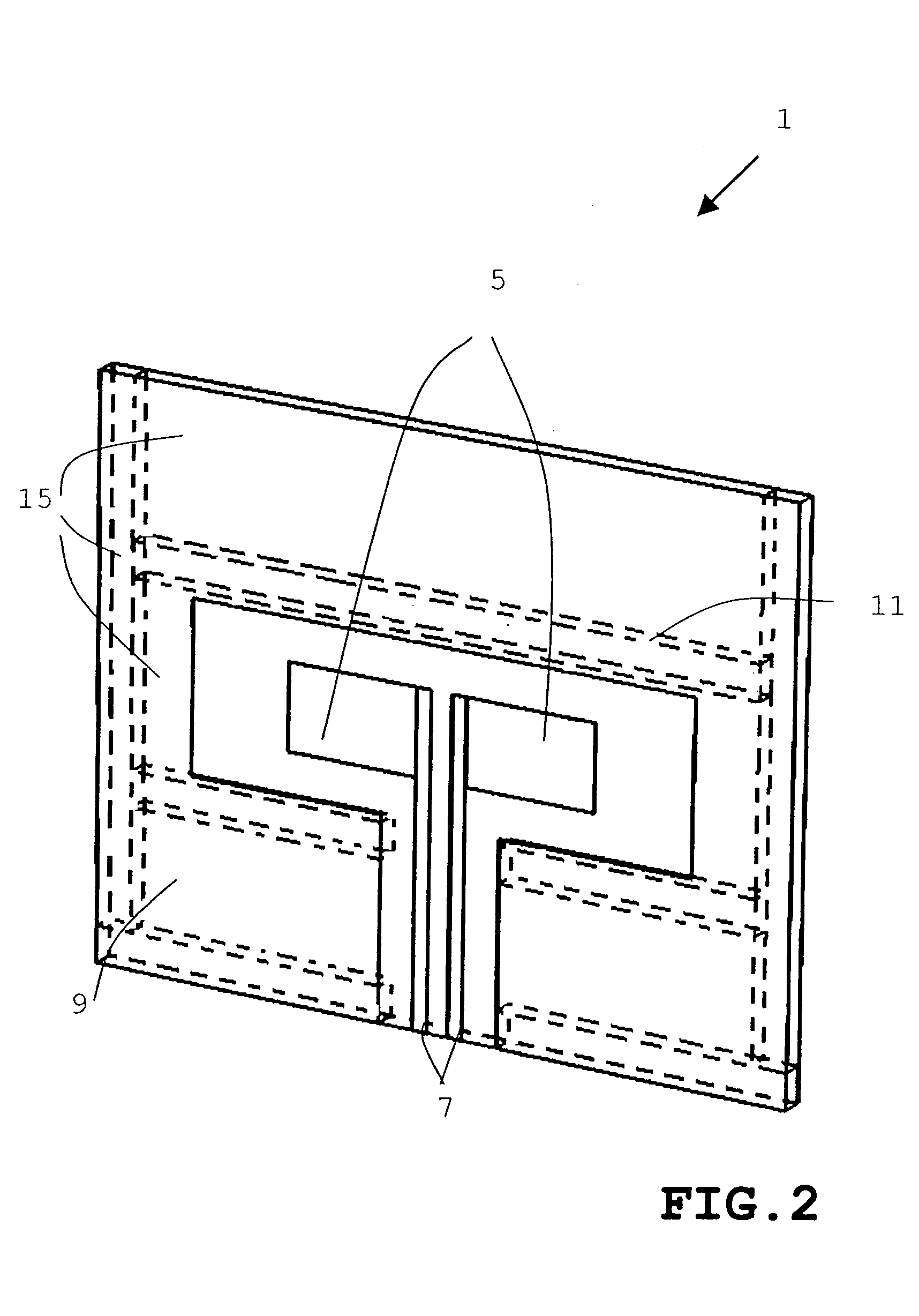Symmetrical antenna in layer construction method
a layer construction and antenna technology, applied in the field of antenna arrays, can solve the problems of insufficient removal of disadvantages caused by asymmetrical excitation, radiation loss in response to patch coupling, and interference, and achieve the effect of improving radiation characteristics
- Summary
- Abstract
- Description
- Claims
- Application Information
AI Technical Summary
Benefits of technology
Problems solved by technology
Method used
Image
Examples
Embodiment Construction
[0032] In the figures, the same reference numbers designate the same or functionally equivalent components. All the drawings are schematic, and, for the purpose of increased clarity of the topology of each respective layer configuration, the illustrations are not to scale.
[0033]FIG. 1 shows a schematic view of an example of antenna array 1 according to the present invention, having a representation of field vectors 13 of the electrical fields. Patch 3, a rectangular sheet metal platelet, is situated parallel to the stratification of antenna array 1, at a distance of approximately the 0.1-fold of the wavelength of the transmitted radiation via flat dipole 5 on the stratification system, that is about 1.2 mm, at 24 GHz.
[0034] The distance is not limited to this measure, but rather, it may vary. A range of from 0.01 to 0.2 of the wavelength is very suitable. The transmitted radiation has a frequency in a range about 26 GHz. Because of the dielectric load and coupling with dipole 5, p...
PUM
 Login to View More
Login to View More Abstract
Description
Claims
Application Information
 Login to View More
Login to View More - R&D
- Intellectual Property
- Life Sciences
- Materials
- Tech Scout
- Unparalleled Data Quality
- Higher Quality Content
- 60% Fewer Hallucinations
Browse by: Latest US Patents, China's latest patents, Technical Efficacy Thesaurus, Application Domain, Technology Topic, Popular Technical Reports.
© 2025 PatSnap. All rights reserved.Legal|Privacy policy|Modern Slavery Act Transparency Statement|Sitemap|About US| Contact US: help@patsnap.com



